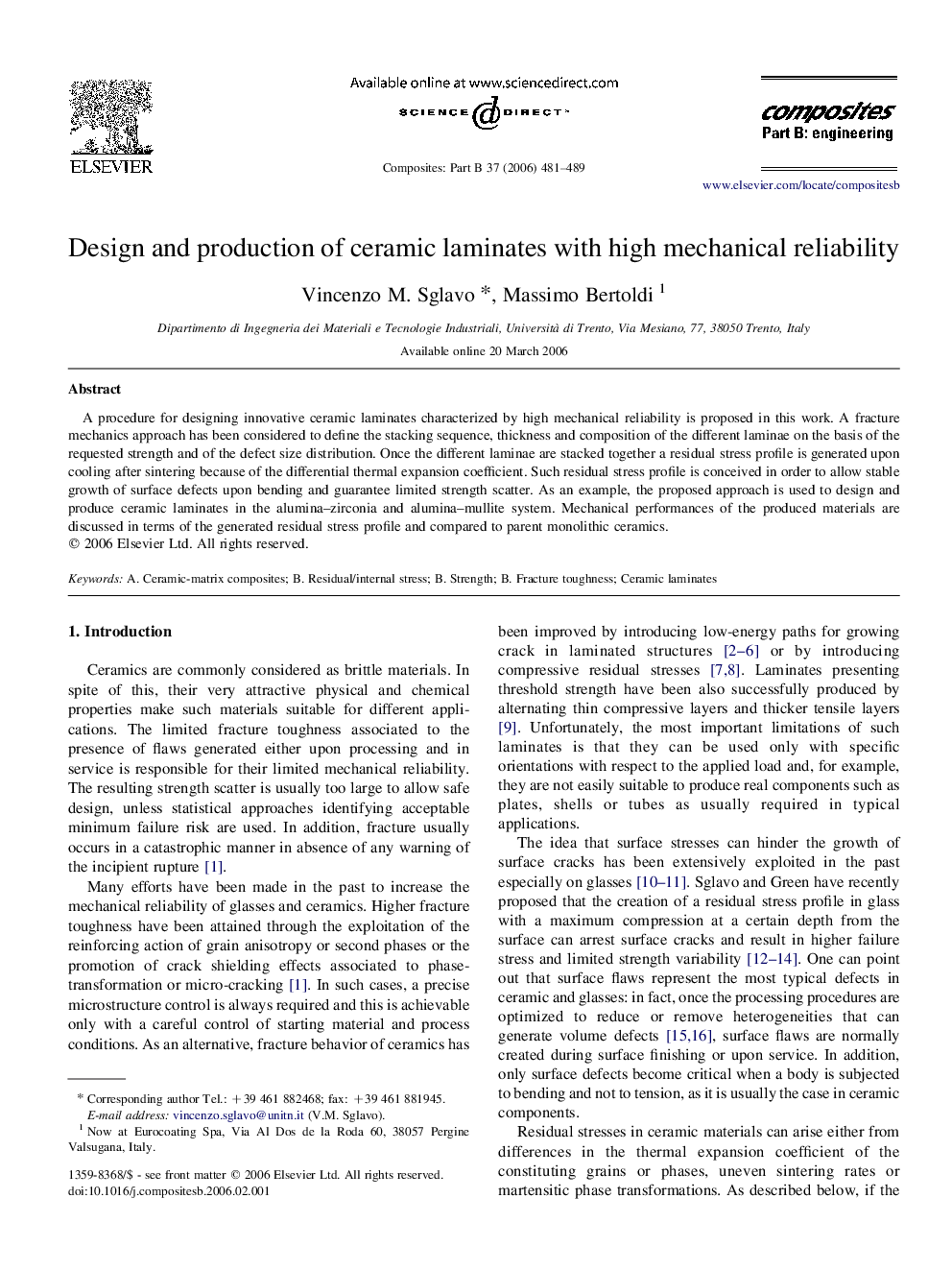| Article ID | Journal | Published Year | Pages | File Type |
|---|---|---|---|---|
| 819780 | Composites Part B: Engineering | 2006 | 9 Pages |
A procedure for designing innovative ceramic laminates characterized by high mechanical reliability is proposed in this work. A fracture mechanics approach has been considered to define the stacking sequence, thickness and composition of the different laminae on the basis of the requested strength and of the defect size distribution. Once the different laminae are stacked together a residual stress profile is generated upon cooling after sintering because of the differential thermal expansion coefficient. Such residual stress profile is conceived in order to allow stable growth of surface defects upon bending and guarantee limited strength scatter. As an example, the proposed approach is used to design and produce ceramic laminates in the alumina–zirconia and alumina–mullite system. Mechanical performances of the produced materials are discussed in terms of the generated residual stress profile and compared to parent monolithic ceramics.
